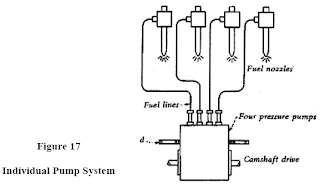Inverter (air conditioning)
The inverter tag found on some air conditioners signifies the ability of the unit to continuously regulate its thermal power flow by altering the speed of the compressor in response to cooling demand.
Traditional reverse-cycle air-conditioners use a heat pump that is either working at maximum capability or switched off, as the compressor's speed cannot be varied. In order to regulate temperature a thermistor is used to measure the ambient air temperature and switch the compressor on when the ambient air temperature is too far from the desired temperature
Air-conditioners bearing the inverter tag use a variable-frequency drive to control the speed of the motor and thus the compressor. The variable-frequency drive uses a rectifier to convert the incoming AC current to DC and then uses pulse-width modulation of the DC current within an inverter to produce AC current of a desired frequency. The AC current is used to drive a brushless motor or an induction motor. As the speed of a brushless motor is synchronised to the frequency of the AC current, it is thus possible to build a compressor that can be run at different speeds. Similarly, the voltage and frequency can be varied as needed to efficiently run an induction motor at different speeds. A microcontroller can then sample the current ambient air temperature and adjust the speed of the compressor appropriately.
Eliminating stop-start cycles increases efficiency, extends the life of components, and helps eliminate sharp fluctuations in the load the air-conditioner places on the power supply.
While at the beginning of the 1990s inverter air conditioners had some drawbacks,[1] this is no longer the case. Running at full load conventional air conditioners tend to be more efficient and outperform inverters. Inverter-based air conditioners have their strengths in environments where part load is common as they are significantly more efficient than conventional air conditioners in these situations. For most households inverters are the preferred option as part load is the common mode there. The higher initial expense is balanced by lower energy bills. In a typical setting the pay-back time is about two years.
Therefore, it depends on usage what type will be better. In any case though, it pays to buy an energy efficient model, i.e. one with a high SEER, EER or HSPF factor and at least an EnergyStar certified product, as this will significantly reduce the electricity bill.
The inverter principle has been applied to a wide range of household appliances including microwave ovens, washing machines, and so on
Traditional reverse-cycle air-conditioners use a heat pump that is either working at maximum capability or switched off, as the compressor's speed cannot be varied. In order to regulate temperature a thermistor is used to measure the ambient air temperature and switch the compressor on when the ambient air temperature is too far from the desired temperature
Air-conditioners bearing the inverter tag use a variable-frequency drive to control the speed of the motor and thus the compressor. The variable-frequency drive uses a rectifier to convert the incoming AC current to DC and then uses pulse-width modulation of the DC current within an inverter to produce AC current of a desired frequency. The AC current is used to drive a brushless motor or an induction motor. As the speed of a brushless motor is synchronised to the frequency of the AC current, it is thus possible to build a compressor that can be run at different speeds. Similarly, the voltage and frequency can be varied as needed to efficiently run an induction motor at different speeds. A microcontroller can then sample the current ambient air temperature and adjust the speed of the compressor appropriately.
Eliminating stop-start cycles increases efficiency, extends the life of components, and helps eliminate sharp fluctuations in the load the air-conditioner places on the power supply.
While at the beginning of the 1990s inverter air conditioners had some drawbacks,[1] this is no longer the case. Running at full load conventional air conditioners tend to be more efficient and outperform inverters. Inverter-based air conditioners have their strengths in environments where part load is common as they are significantly more efficient than conventional air conditioners in these situations. For most households inverters are the preferred option as part load is the common mode there. The higher initial expense is balanced by lower energy bills. In a typical setting the pay-back time is about two years.
Therefore, it depends on usage what type will be better. In any case though, it pays to buy an energy efficient model, i.e. one with a high SEER, EER or HSPF factor and at least an EnergyStar certified product, as this will significantly reduce the electricity bill.
The inverter principle has been applied to a wide range of household appliances including microwave ovens, washing machines, and so on



Comments